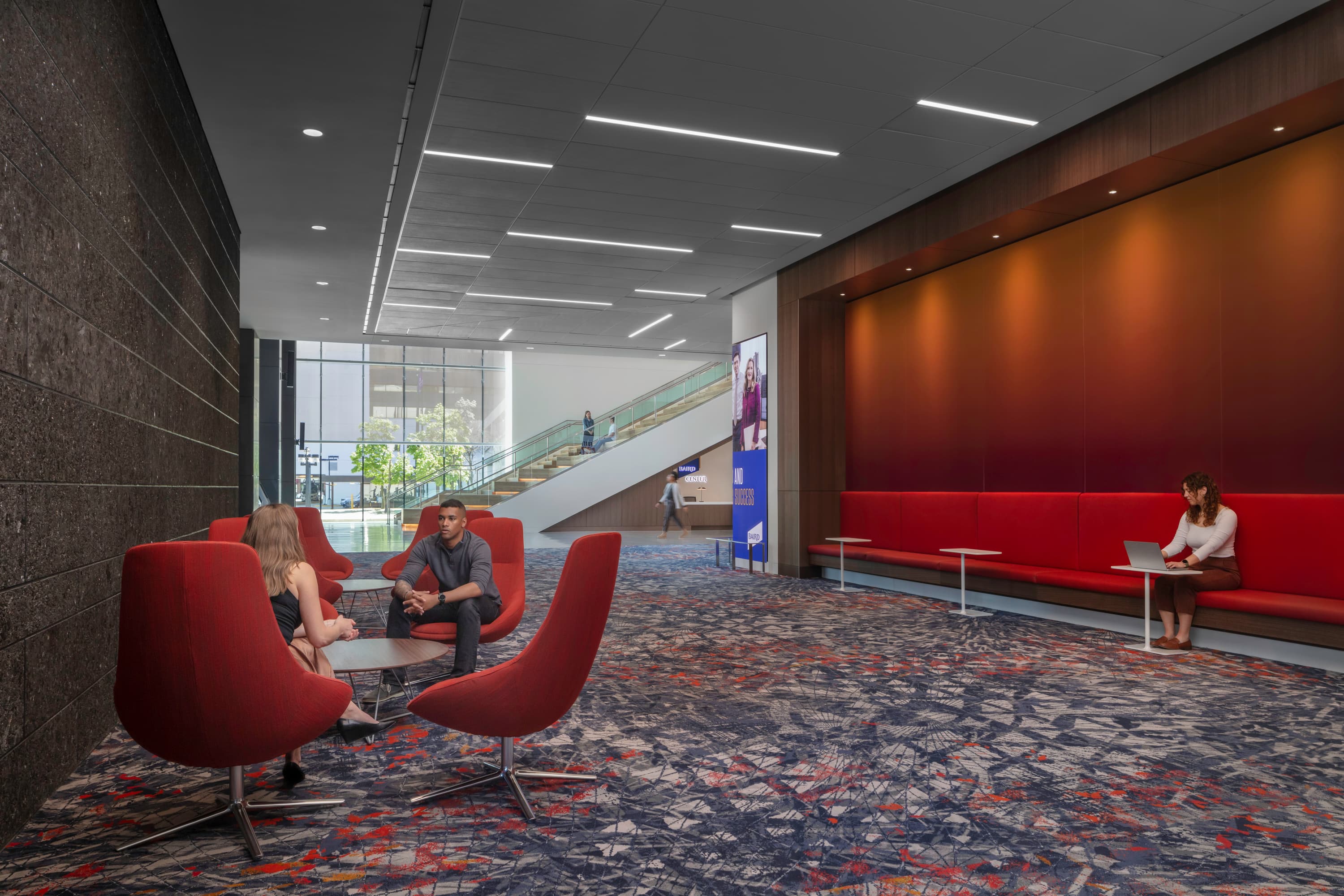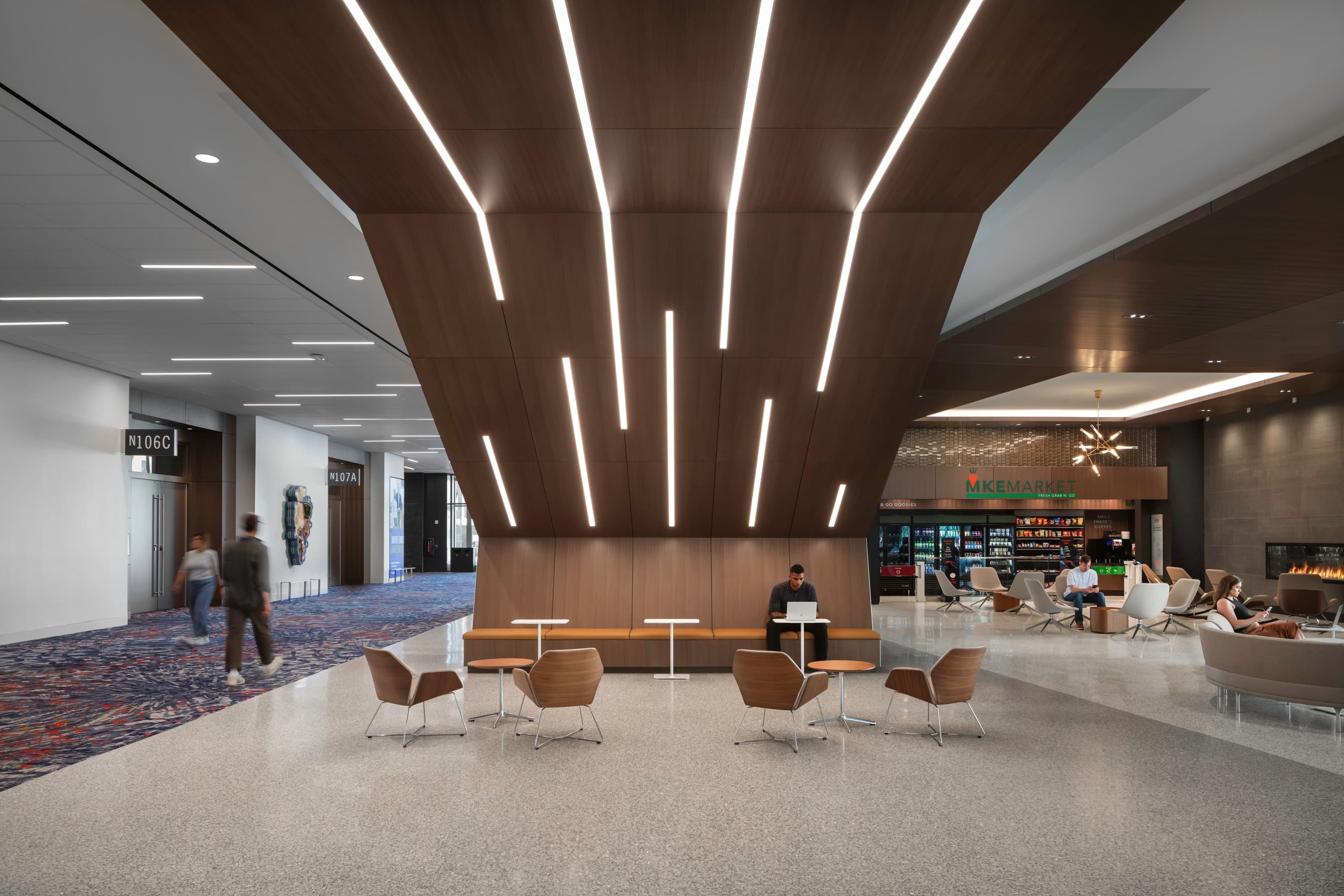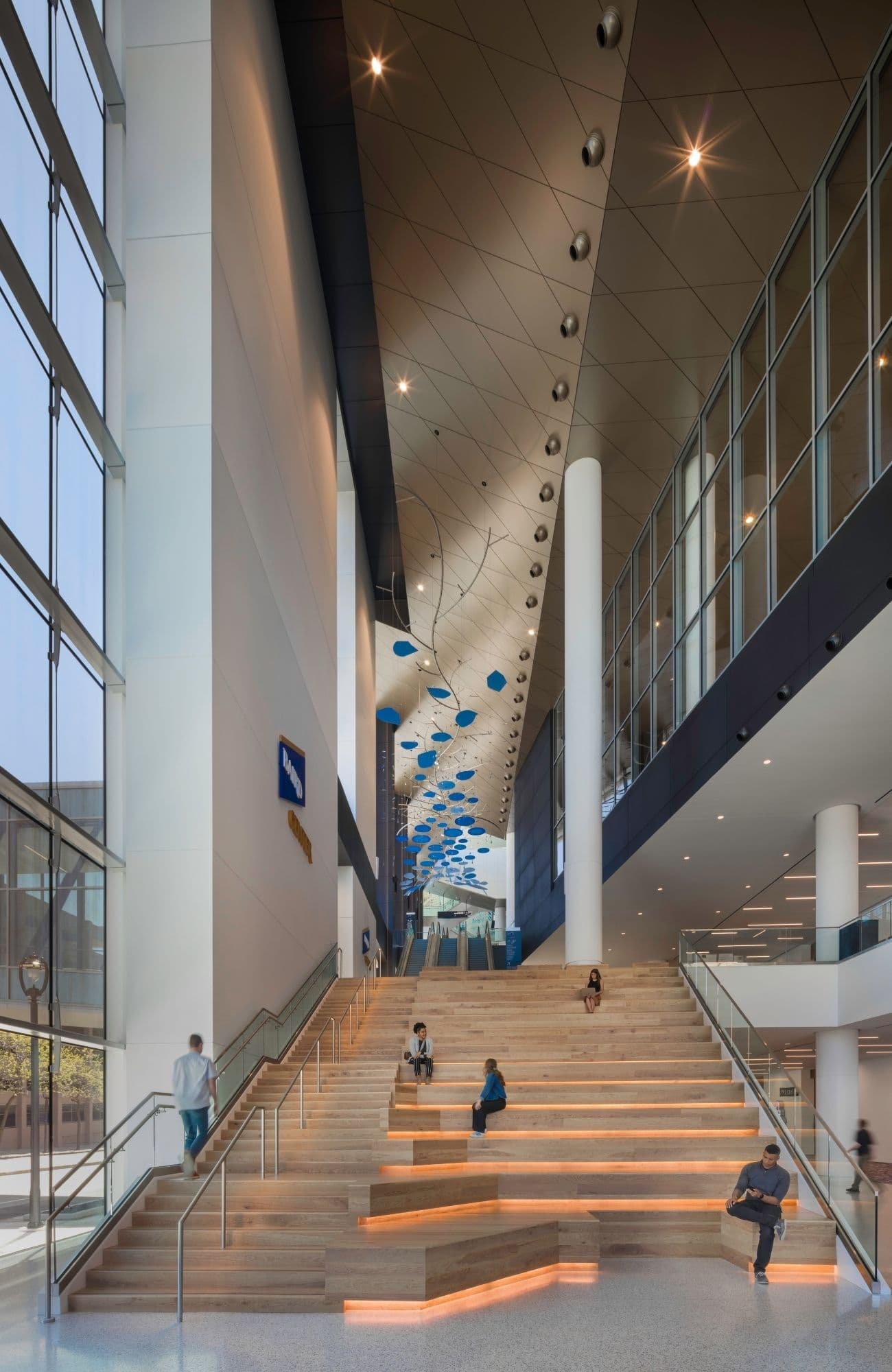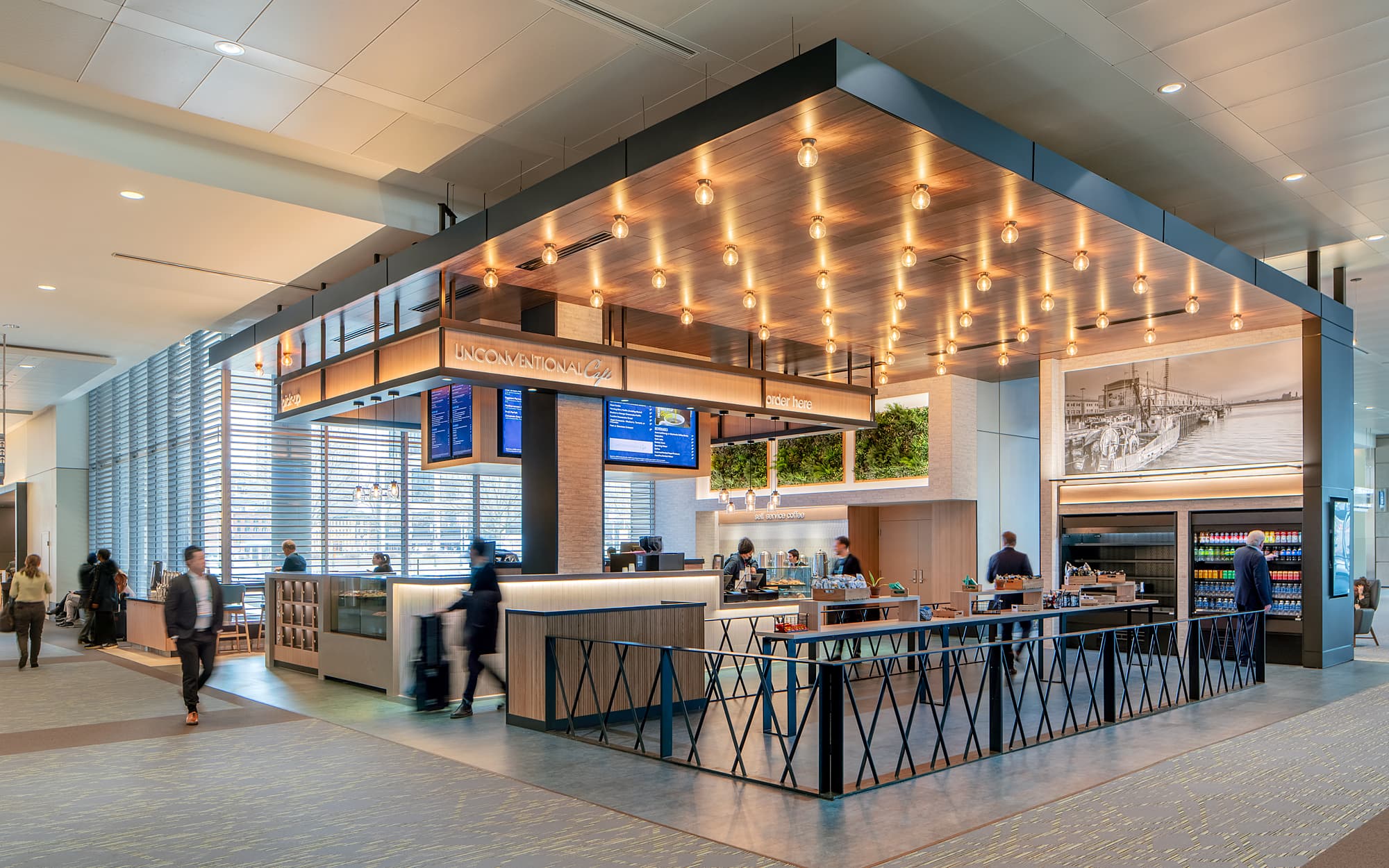When you picture a convention center, what comes to mind? Long concourses lined with meeting rooms, vast exhibit halls with concrete floors and open-structure ceilings, rows of exhibitors, and perhaps a grand ballroom with an intricate ceiling design? At TVS, we are continually reimagining how the convention experience can be improved. In a post-COVID world where attendees crave authentic human connection, we believe design can be a powerful catalyst.
Destinations like THE MART, along with other adaptive gathering spaces, reflect how these environments are evolving to support meaningful exchange during key activations. Today’s convention center interiors must do more than simply accommodate events; they must foster interaction, inspiration, and community.
Three key design principles guiding our approach are:
Amenities that authentically reflect and celebrate the local city's culture and identity
It’s often said that a good cup of coffee can make or break your day. At the Boston Convention and Exhibition Center, we transformed an underperforming, generic coffee kiosk into a vibrant destination infused with the spirit of Boston. Drawing inspiration from the iconic Boston Harbor, the new “Unconventional Café” blends hospitality, local flavor, and convenience into a unique experience.
Just down the corridor, we reimagined an abandoned FedEx store into a new frictionless market. Utilizing Amazon-Go technology, the market offers attendees a seamless way to grab a quick bite or cup of coffee. Adjacent to the market, a restaurant-inspired seating area, set against the backdrop of classic Boston brick, provides a warm, inviting space to relax, recharge, or connect.
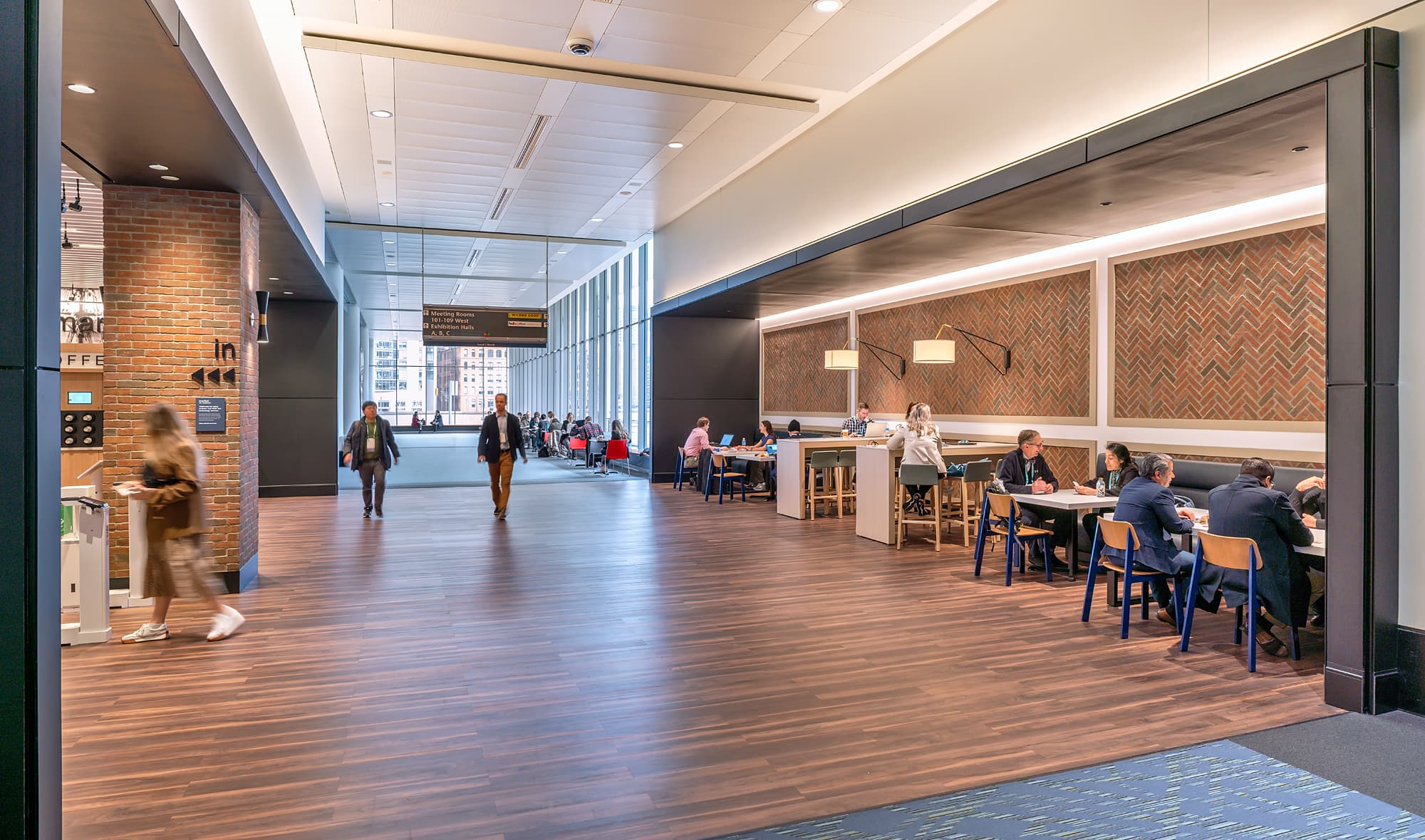
Seamless indoor-outdoor integration encourages engagement with the natural environment
If you're like me, being stuck inside a meeting room all day sounds like a nightmare. While the benefits of natural light are well-documented, today’s convention centers must go even further, providing easy, intuitive access to the outdoors. TVS is more committed than ever to designing spaces that offer meaningful outdoor connections.
A quick step outside to grab a bite, recharge, or catch up with a colleague can offer a critical mental reset between meetings and exhibitions. At the Baird Center in Wisconsin, the Skyview Terrace delivers a stunning panoramic view of the city, creating a memorable and authentic connection between attendees and their setting. The Javits Center in New York City offers another strong example with its expansive green roof, featuring open-air gathering spaces that blend nature with urban energy.
Beyond enhancing well-being, these outdoor spaces serve as rentable, revenue-generating assets, all while making the attendee experience more vibrant, restorative, and memorable—ultimately encouraging return visits.
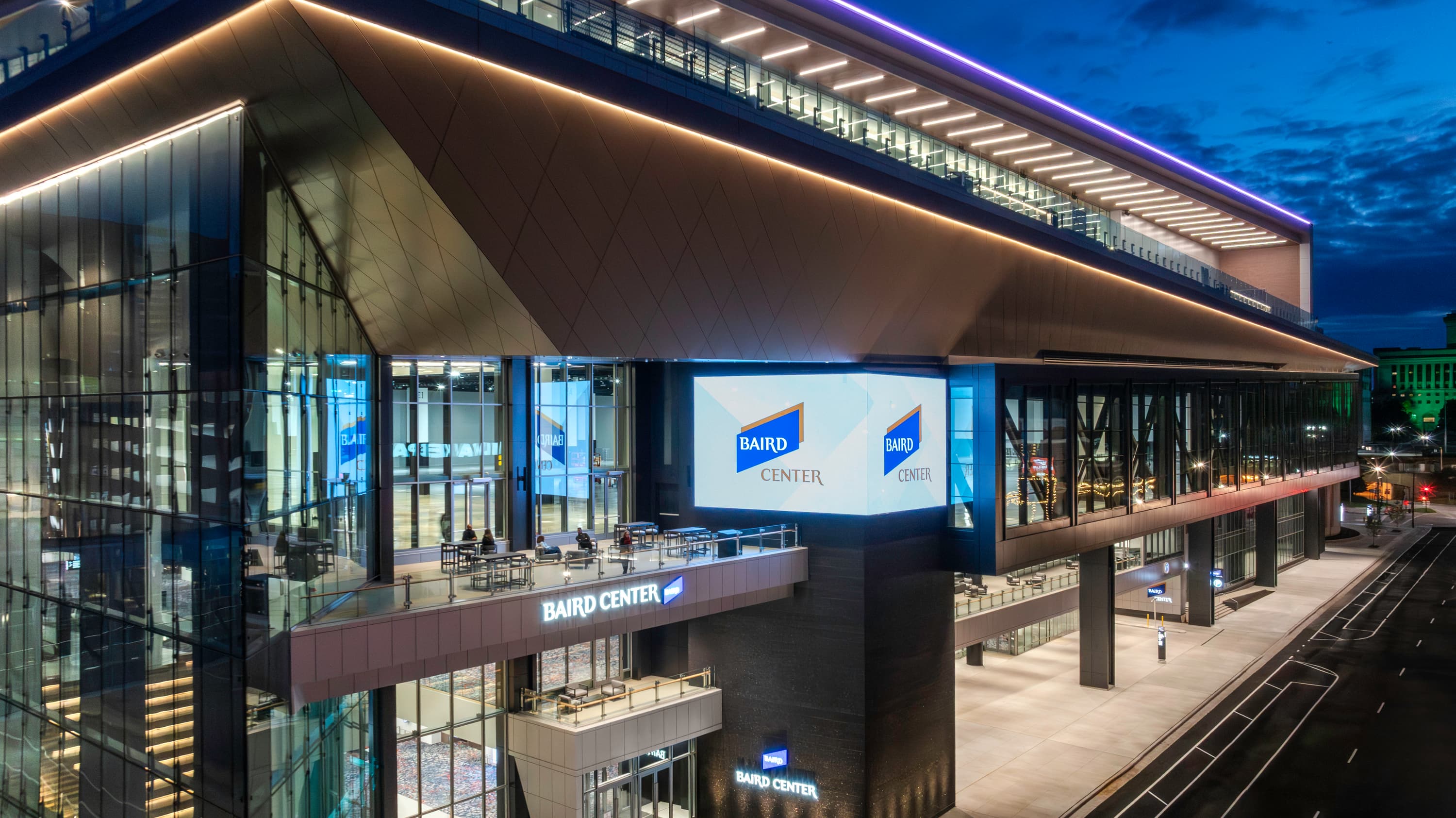
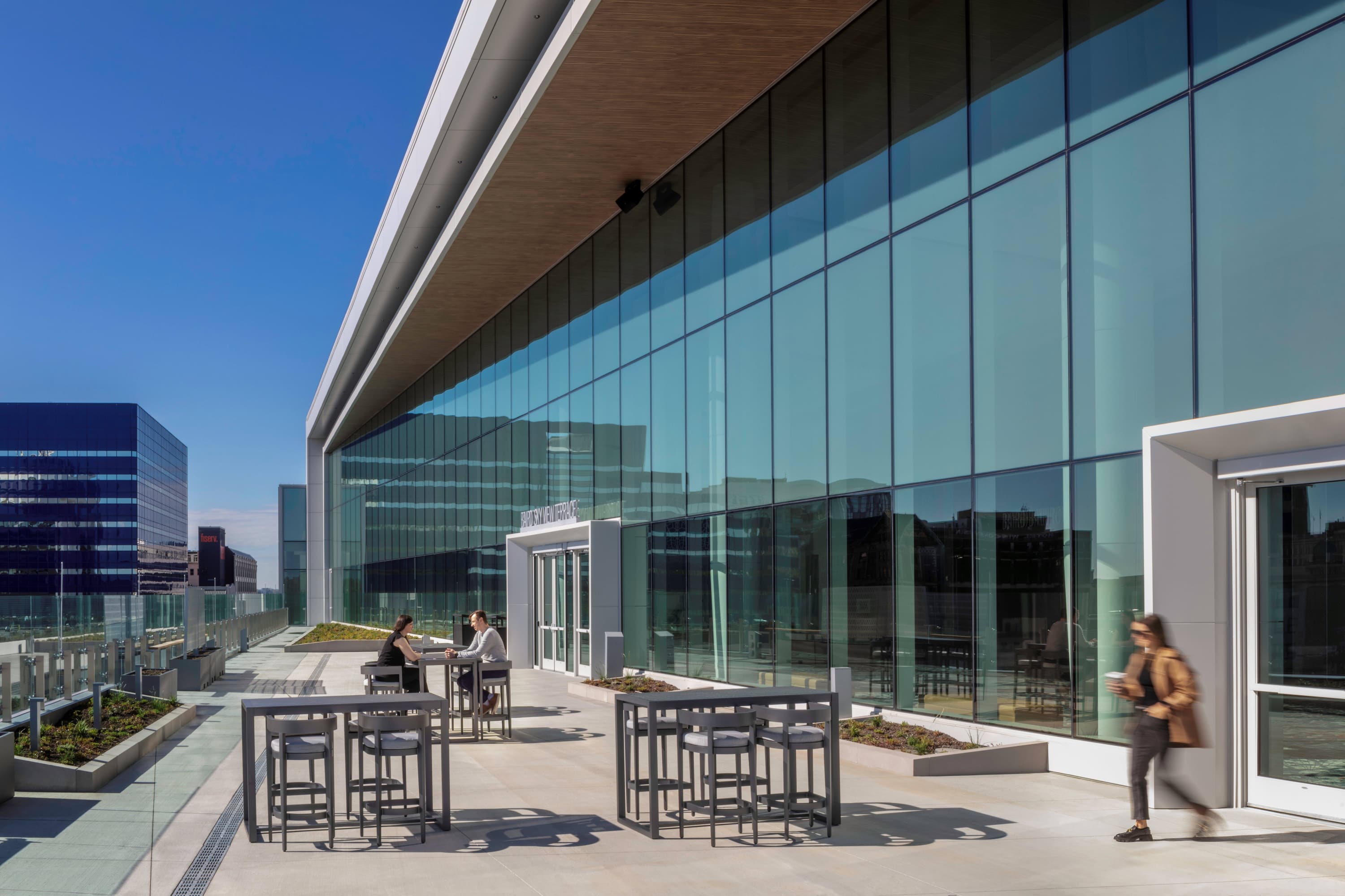
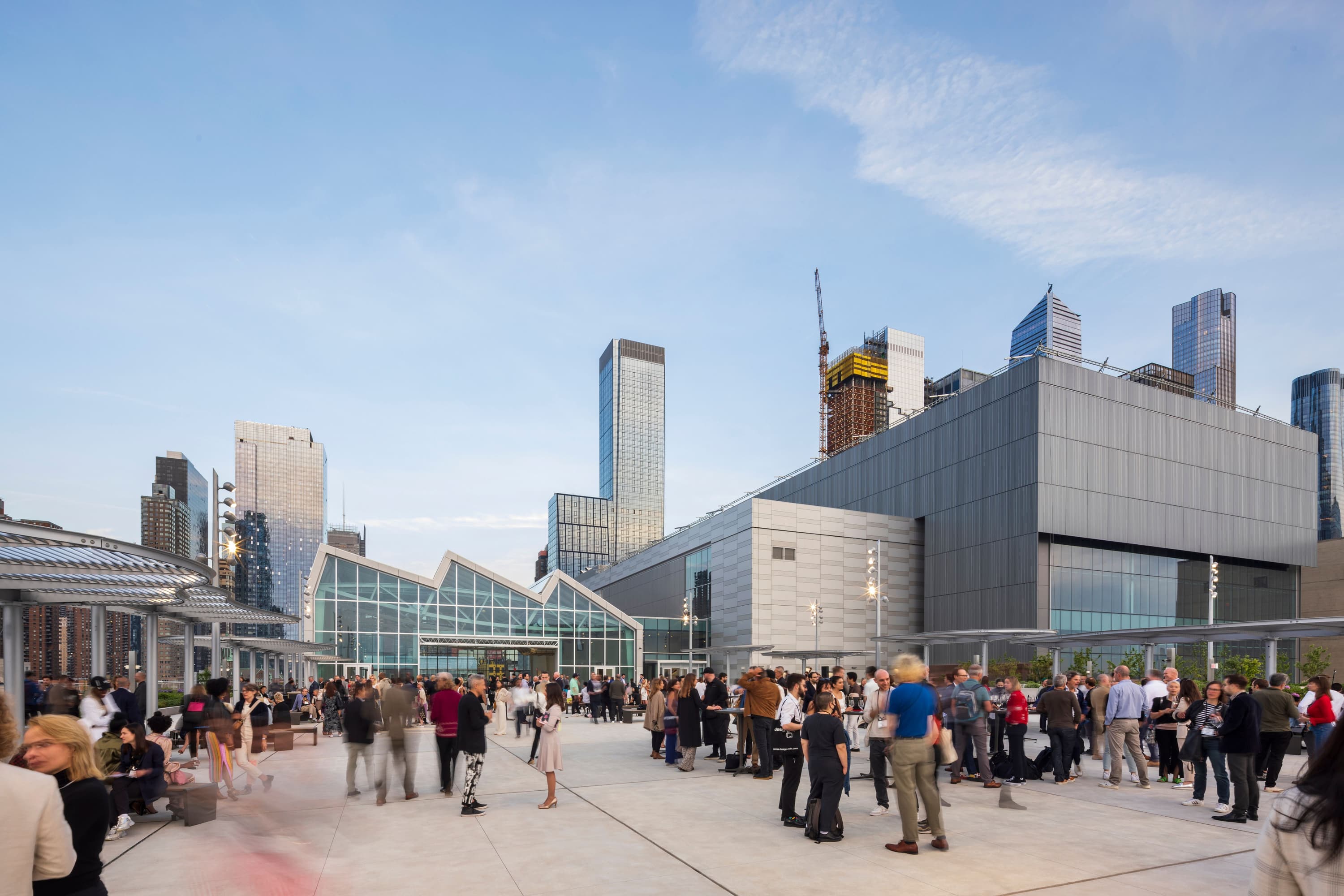
Flexibility for adaptive environments that inform organic connection
Flexible meeting spaces have long been a foundational element in convention center design. Today, that flexibility is extending into public concourses, becoming a new standard. Movable seating configurations, integrated with access to power and technology, allow these areas to adapt fluidly to users' needs. They create opportunities for quiet, heads-down work between sessions, as well as inviting, informal environments for spontaneous collaboration. To fully support exhibitors and attendees, these dynamic spaces must be easily reconfigured on demand, providing true adaptability throughout the event experience.
